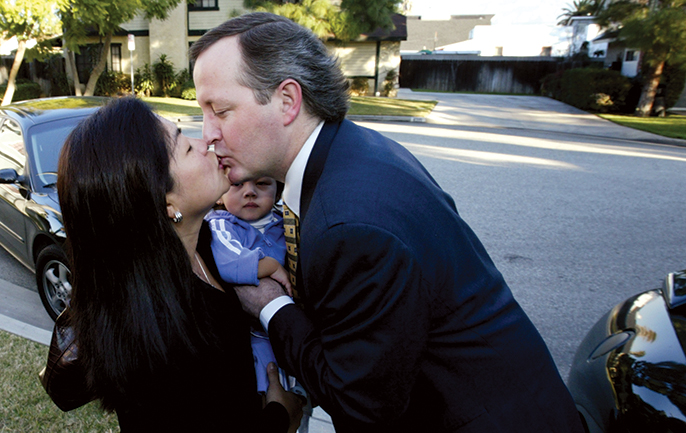
The concept of marriage may be in flux, but commuter marriages—in which spouses live apart in service to their dual professional careers—appear to confirm that married people still see interdependence as a key feature of their unions, according to research by sociologist Danielle Lindemann.
Lindemann, assistant professor of sociology, explored how the seemingly conflicting cultural norms of personal autonomy and a commitment to the institution of marriage play out “on the ground” from the viewpoint of the participants. Her analysis found that commuter couples engage in discourses about two subjects that operate in tension: independence and interdependence.
“Although the study participants positioned themselves as highly individualistic, interdependence was a key theme in their responses as well,” says Lindemann. “Perhaps more surprisingly, a substantial minority of respondents indicated that their non-cohabitation, in fact, enhanced their interdependence.”
Lindemann acknowledges that married couples may live apart for a number of reasons. However, her study specifically focuses on college-educated, dual-earning couples, as prior research has suggested that commuter marriage is more common in this group than in other segments of the population.
Among her findings:
- The majority of respondents identified as highly interdependent despite the individualized structures of commuter marriages.
- Many respondents—emphasizing, in particular, the co-management of tasks—underscored how integrated their partners were in their everyday activities despite their geographic separation.
- Nearly half engaged with the theme of “apart togetherness”—thinking of themselves as connected despite the physical separation.
- More than 75 percent described the usefulness of communication technologies for task sharing.
- A substantial minority interpreted their cohabitation as paradoxically facilitating their interdependence—15.5 percent of respondents from nine couples engaged in this narrative.
- Sixty-six percent of respondents said they had felt judged negatively for their lifestyle—mostly by family members.
- Female respondents spent more time discussing both individualism and interdependence.
- The narrative about non-cohabitation facilitating interconnectedness was more common (though not exclusive) among respondents who lived geographically farther apart and saw each other less frequently.
Lindemann presents commuter marriage as particularly fertile ground to examine the cultural tension between marital interdependence and the shift toward the “individualization” of the American marriage.
This shift has been largely driven, she says, by “…the decline of the male breadwinner/female homemaker model, decreasing task specialization between the genders, the increasing democratization of marital decision-making and the increasing ability of each partner to provide financially for himself or herself.”
“Commuter marriages may be viewed as an extreme manifestation of major transitions in the nature of work and family that have been taking place in the U.S. since the 1970s,” says Lindemann. “The results not only shed light on this under-studied population, but also broaden our understanding of the evolving cultural meaning of marriage.”
































